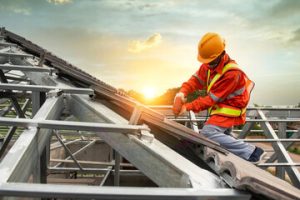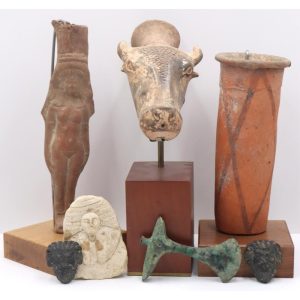A new roof defines more than shelter. It signals renewal and strength. Roof Replacement is a vital investment that goes beyond looks, merging technology, sustainability, and design into a single protective layer that ensures long-term safety and comfort. Every material choice and installation detail contributes to how a structure lives and breathes.

Modern roof replacement has transformed from simple patchwork to a precision-driven craft. Homeowners today consider factors like energy efficiency, weather adaptability, and material longevity before making decisions. The replacement process now involves smart materials that reflect heat, resist moisture, and last longer than traditional options. This evolution offers both functionality and beauty.
Technology has become a quiet architect in roofing projects. Advanced imaging tools map out old structures, revealing weaknesses and predicting future damage risks. With accurate data, installers can plan efficiently and minimize waste. These advancements reduce errors and help create a roof that stands firm against years of harsh exposure.
Eco-conscious homeowners now view roof replacement as a chance to contribute to environmental health. Recycled materials, reflective coatings, and renewable components redefine what sustainable roofing means. The new generation of roofs minimizes waste and energy use, creating eco-friendly barriers that support both home and planet.
Durability is no longer a luxury but a requirement. Harsh weather patterns have made strong materials a priority. Roofs today are designed to endure more—rain, wind, or heat. The modern replacement process focuses on resilience, ensuring every layer works together to block intrusion and manage moisture effectively.
Aesthetic innovation also drives roof replacement trends. Homeowners no longer settle for basic designs. They experiment with colors, patterns, and textures that align with architectural style. This visual harmony adds personality to the structure while increasing its market value.
The replacement process begins long before installation. A thorough inspection defines what must change and what can stay. Experts evaluate every beam and surface to detect hidden decay. These insights guide decisions, ensuring that the new roof is built on a foundation of strength, not uncertainty.
Safety protocols have improved dramatically in roof replacement projects. Workers now rely on harness systems, scaffolding, and weather-tracking tools to prevent accidents. These safety upgrades not only protect laborers but also ensure smoother timelines and cleaner results. A safe installation is a precise installation.
Moisture control remains one of the most vital aspects of roofing. Without proper sealing and ventilation, roofs decay from within. Replacement projects now integrate airflow systems that balance interior and exterior temperatures, preventing mold and extending roof life. This simple but critical design detail maintains long-term protection.
Sound insulation is another consideration often overlooked. Modern roof replacement methods can greatly reduce exterior noise. By using layered underlayment and denser materials, homes become quieter and more peaceful. This adds comfort beyond physical protection.
Energy efficiency defines the modern roofing era. Reflective materials and insulation layers reduce heat absorption, cutting cooling costs during hot seasons. Likewise, better thermal retention during cold months saves energy and money. A well-replaced roof acts as a year-round energy manager.
Homeowners are increasingly involved in every stage of roof replacement. Transparent communication between contractors and clients helps align expectations. With access to design simulations and cost forecasting tools, homeowners can make informed choices that match their lifestyle and budget. This shared planning results in fewer surprises and better satisfaction.
The cost of roof replacement may seem daunting, but the long-term benefits justify the expense. Delaying necessary replacement leads to interior damage, leaks, and higher repair costs. A proactive approach protects both the structure and the people living beneath it. Viewing it as an investment rather than an expense changes the mindset completely.
Time is another crucial factor. Proper scheduling ensures that weather conditions cooperate during replacement. Unplanned rain or extreme heat can delay projects and affect quality. Planning around climate patterns and using fast-setting materials helps maintain efficiency and safety.
Some homeowners see roof replacement as an opportunity to upgrade with future technology. Smart roofs embedded with solar-ready structures or monitoring sensors represent a new era of innovation. These systems detect leaks, adjust ventilation, and optimize energy performance automatically. The roof becomes an intelligent partner rather than a static cover.
Sound design principles guide every good replacement. Proper slope, alignment, and drainage systems prevent structural strain. When a roof replacement follows these principles, it ensures both beauty and function. The result is a home that remains strong and balanced over time.
The materials chosen for a roof define its performance. Asphalt, metal, tile, or synthetic components all carry distinct advantages. New composites offer flexibility and weatherproofing that older materials could not achieve. Each choice reflects priorities—durability, cost, or aesthetic charm.
Sustainability has extended beyond materials into installation practices. Companies now recycle debris, reuse underlayment, and reduce on-site pollution. This commitment creates a cleaner process with minimal environmental footprint. Responsible replacement benefits everyone involved.
Homeowners also focus on warranties and guarantees, seeking assurance that their investment will last. Extended coverage options now protect against fading, cracking, or premature wear. This shift from short-term maintenance to long-term reliability builds trust and peace of mind.
Replacing a roof also means rethinking ventilation systems. Poor airflow shortens roof lifespan and raises utility bills. Modern roof designs incorporate ridge vents and soffit systems that regulate air circulation naturally. This innovation maintains healthy roof conditions year-round.
In many ways, roof replacement symbolizes transformation. It turns an aging, vulnerable home into a renewed, efficient, and beautiful structure. The process reflects both craftsmanship and vision, blending science with creativity. Every nail and panel contributes to the home’s evolution.
The emotional aspect of roof replacement should not be overlooked. For many, a new roof represents security and new beginnings. It provides confidence that their home is ready for the years ahead. This psychological comfort holds value beyond materials and labor.
Roof replacement also impacts property value significantly. A new roof enhances curb appeal and reassures buyers about structural reliability. Real estate experts often identify roofing as one of the top upgrades for increasing resale potential. The investment returns through both savings and appreciation.
Maintenance after replacement ensures long-term performance. Regular inspections, cleaning, and prompt repairs prevent early degradation. The small effort of upkeep maximizes the lifespan of even the most advanced materials. A roof that is cared for becomes a roof that endures.
Seasonal changes continuously test roofing systems. Heavy rain, strong winds, and temperature shifts challenge durability. A quality replacement accounts for these variations through flexible materials and advanced sealing methods. This foresight ensures consistent protection across all seasons.
The installation team plays a major role in roof replacement success. Skilled professionals apply technical knowledge to guarantee precise alignment and sealing. Their craftsmanship turns plans into results. The difference between an average roof and an exceptional one often lies in human expertise.
Even the cleanup process matters. Efficient debris management prevents environmental harm and keeps neighborhoods safe. Responsible disposal of old materials and the use of eco-friendly tools show respect for both clients and surroundings. Clean work reflects professionalism.
Innovation will continue to redefine roof replacement. Future systems may include energy-harvesting tiles, self-repairing coatings, and climate-responsive materials. These advancements will turn roofs into active elements of sustainable living. The roof of tomorrow will do more than protect—it will interact and adapt.
Ultimately, roof replacement is about renewal and foresight. It merges human ingenuity with environmental responsibility. Each new layer tells a story of protection, progress, and pride. As homes evolve, the roof remains the steadfast guardian above all else.
A good roof protects what matters most. Replacing it when needed ensures peace, comfort, and longevity. With every upgrade, we build not just stronger houses but smarter, safer homes. Roof replacement, done right, is an investment that shelters both body and spirit.
